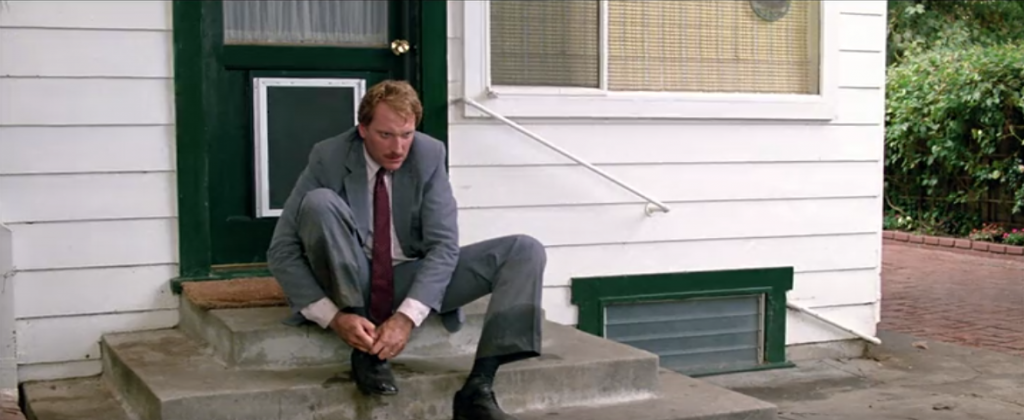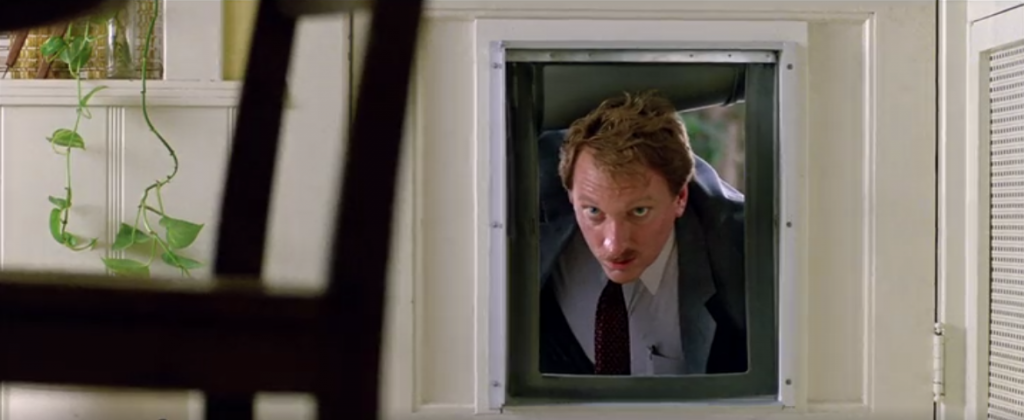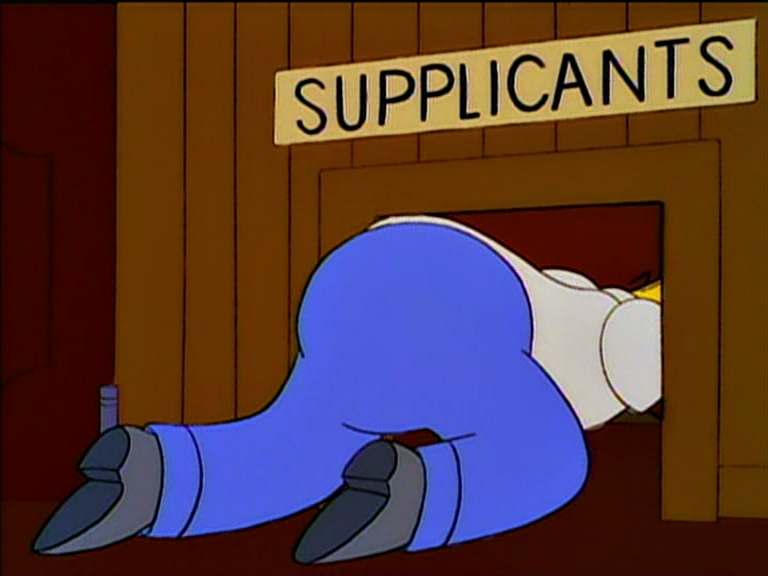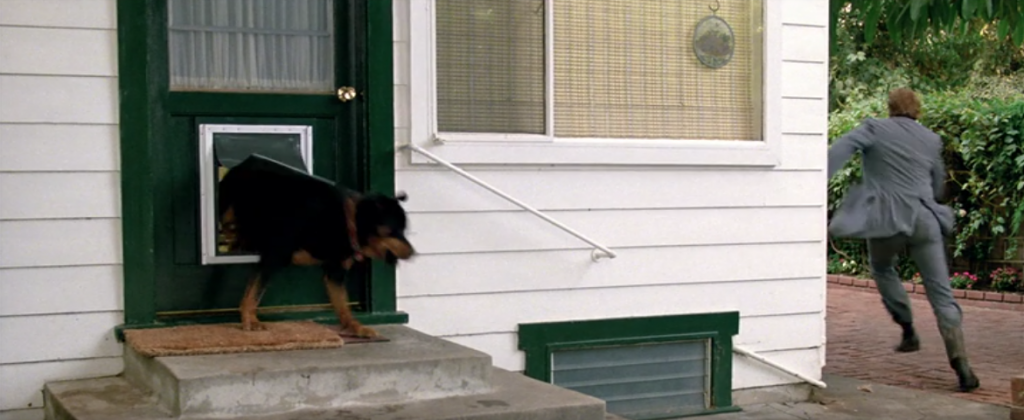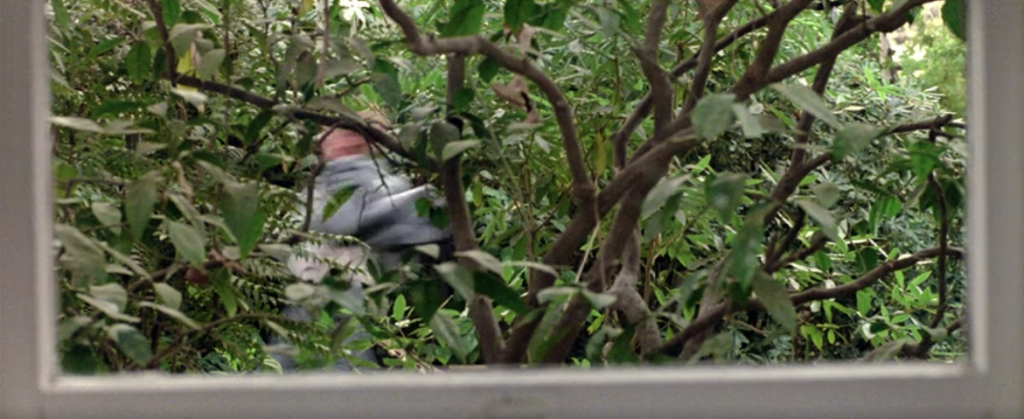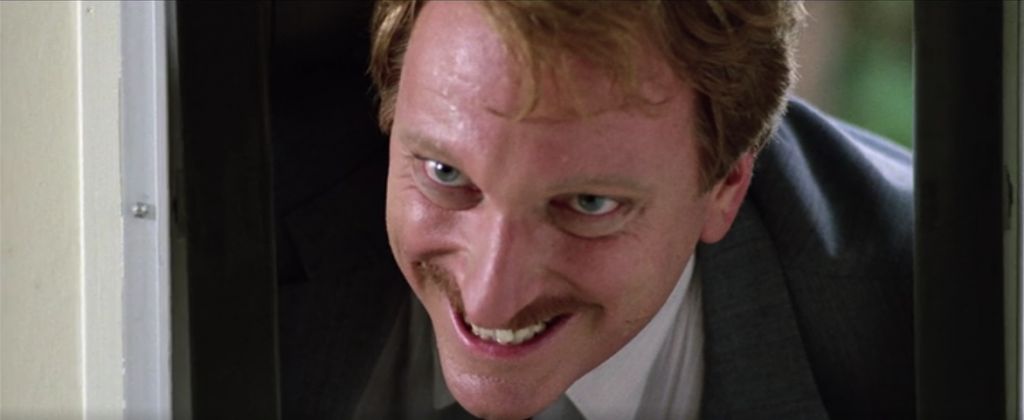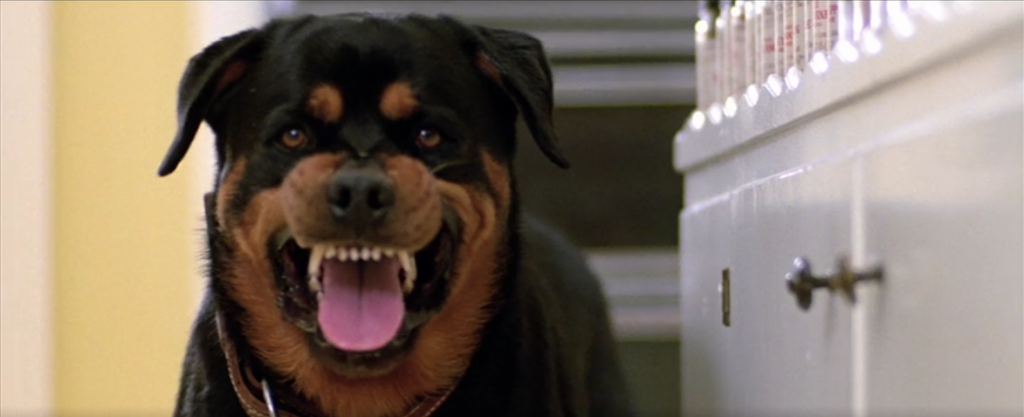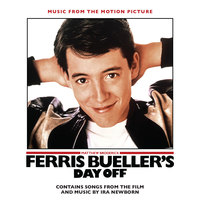
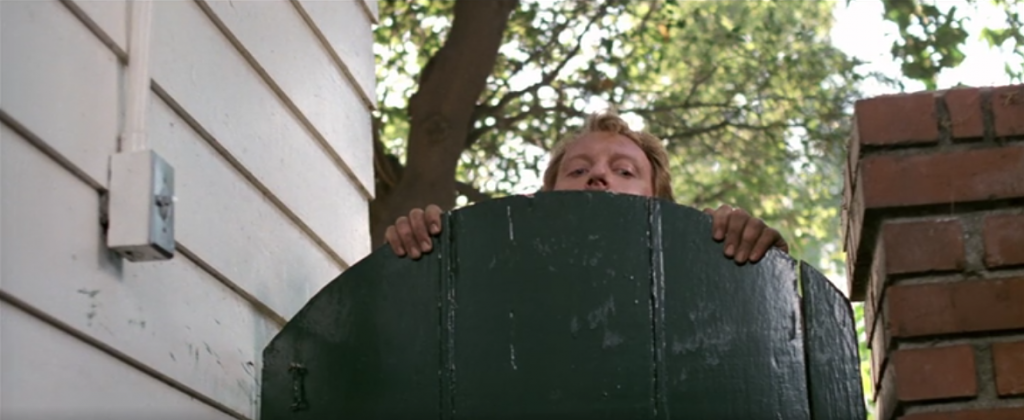
(Scene beginning 55:15)
‘Mr. Rooney’s sole motivation is “getting Bueller”,’ claims Media Literacy author Art Silverblatt; ‘To reduce Ferris’ influence over the other students, which would re-establish adults, Rooney, that is, as traditional authority figures.’[1] Rooney does not ‘get Bueller’ however, thus never truly establishes himself as having any executable authority. This is no better exemplified than through his encounter with the Bueller family dog.
The interaction is initiated by Rooney himself, as he attempts to break into the Bueller household via a cat flap to prove Ferris is skipping school. This is ironic as all his ‘human’ efforts of trying to enter the property, such as ringing the doorbell and attempting to climb in through the window, have already proved futile. He must ‘animalise’ (or even ‘infantilise’) himself as a last resort, generating a source of comedy from his degradation.
As Rooney is eye level with the dog, the encounter takes the form of an array of POV shots with varying degrees of close-up to highlight emotion, and follows a base shot-reverse-shot structure. The mise-en-scene is simplistic but effective, as the dog waits in the kitchen addressing Rooney, and Rooney stays in the flap, not only a shift in power dynamics but also a human/animal role-reversal. Part of the dog’s power also comes from breed stereotypes – Rottweilers are often used in media as a ‘tough’[2] dog due to their bulky appearance and firm stature, and the film plays to that preconception.
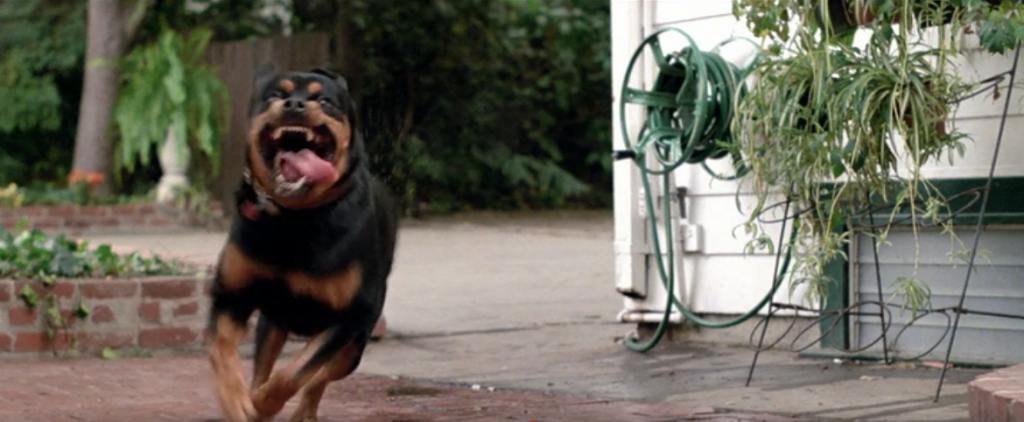
Contrary to the stereotype, Rottweilers do have a more pleasant, domesticated side to them, and the scene highlights this also as Rooney attempts to apply typical control methods. For example, his change of expression from remaining entirely still and non-threatening to a smile and an endearing utterance of ‘hey doggie’, to which the dog replies positively, stopping growling and panting happily – the dog has full potential to be an affectionate family pet. However, when Rooney makes the mistake of mimicking this action the dog reverts back to aggression, seeing Rooney as closer to an animal once again, thus closer to a threat. This resolves the crescendo from growling into barking, and the dog chases Rooney outside; altogether un-phased by his commands of ‘Sit!’ and ‘Stay!’ This notion of being ‘stuck’ in a cat flap is almost a cliché kind of set-up most often seen in cartoons, with human and animal dominance roles turned upside down. Ferris Bueller ultimately adds a more intelligent behavioral spin on this than simply being stuck however, making the inclusion of an otherwise childish element more adult.
The use of the dog as an antagonising character in this scene and further into the film is an inclusion primarily utilised as a vehicle for comedy. The audience is given no indication Ferris even has a dog until this scene over halfway through the film (55 / 103 minutes), even despite a thoroughly fourth wall-breaking house tour earlier in the film. The dog, which remains unnamed and relatively characterless, only exists to keep Rooney out of the Bueller household. Whist this forms one of the crucial keys to Ferris’ successful day off, as stated by Cameron, ‘As long as I’ve known him, everything works for him’, the dog only serves as a means to an end, rather than a fully developed character. This is especially noticeable in the final shot of the sequence: a Scooby-doo door style chase shot from a window, where Rooney runs back and forth from the dog, but the dog doesn’t physically feature in the shot.
In a comedy however, it is not unconventional to feature animals in such an ancillary way, and especially not in the context of Ferris Bueller’s world, where even the Bueller family pet seems to aid Ferris’ perfect ‘day off’ entirely unbidden.
‘Monkey See, Monkey Do.’
References
[1] Silverblatt, Art, Genre studies in mass media: A handbook (New Brunswick, NJ, United States: M.E. Sharpe, 2007).
[2] Deborah L. Duffy, Yuying Hsu, and James A. Serpell, ‘Breed differences in canine aggression’, Applied Animal Behaviour Science, 3–4, 114 (2008), 441–460 <http://www.sciencedirect.com/science/article/pii/S0168159108001147> [accessed 16 January 2017].
